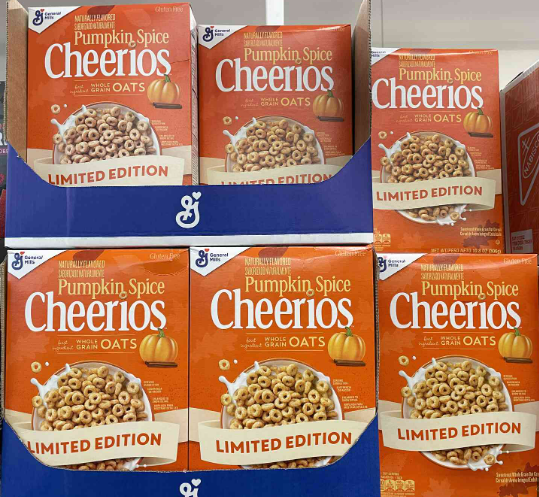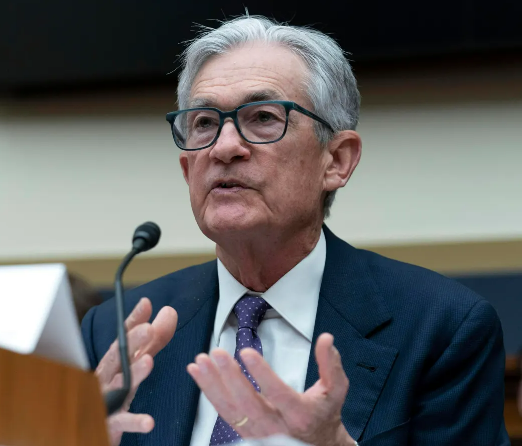
As General Mills (GIS) prepares to release its fiscal Q4 earnings on June 26, investors are bracing for a bitter aftertaste. The maker of Cheerios, Yoplait, and Häagen-Dazs faces a perfect storm of shrinking pricing power, private-label encroachment, and a consumer revolt against grocery inflation. With Wall Street forecasting flat year-over-year revenue growth and operating margins contracting 120 basis points to 15.7%, here’s why the stock’s 22% year-to-date decline may still have room to fall.
Ⅰ. The Snackflation Hangover: Consumers Push Back
After two years of aggressive price hikes, the elastic is snapping:
- Price Elasticity Shock:
General Mills’ cereal prices rose 34% since 2021, but volumes plunged 11% in Q3—the worst drop in a decade.- Competitor Post Holdings saw similar trends, with volumes down 8% despite 30% price increases.
- Premiumization Fatigue:
Häagen-Dazs’ U.S. sales fell 5% last quarter as shoppers trade down to private-label ice cream (+17% growth). - GLP-1 Drug Disruption:
NielsenIQ data shows snack categories vulnerable to weight-loss drugs (chips, cookies) declined 3.4% YoY—double the broader CPG slump.
“This is the end of the ‘take whatever pricing you want’ era,” warns UBS analyst Cody Ross. “Food CEOs now need to justify every basis point.”
Ⅱ. Private Label Tsunami: The $220 Billion Threat
Retailers’ in-house brands are eating Big Food’s lunch:
| Metric | General Mills (GIS) | Private Label Competitors |
|---|---|---|
| Price Gap (vs. 2021) | +34% | +19% |
| Volume Growth (Q3) | -11% | +6.8% |
| Margin Compression | -120 bps (est.) | +50 bps |
Walmart’s Great Value cereal now commands 18% shelf space vs. GIS’s 22%—a 400-basis-point shift since 2022. Meanwhile, Costco’s Kirkland Signature granola bars are outselling Nature Valley by 3:1 in key markets.
Ⅲ. Cost Squeeze: From Farm to Fork
Input costs remain stubbornly high, eroding margins:
- Wheat Whiplash:
Chicago wheat futures are up 12% YTD due to Russian export curbs. - Sugar Shock:
U.S. sugar prices hit 62.5¢/lb—a 45-year high—after Mexican crop failures. - Labor Leverage:
USDA data shows food manufacturing wages rose 6.3% YoY, triple the pre-pandemic average.
These pressures are forcing General Mills to choose between margins and market share—a lose-lose scenario.
Ⅳ. Strategic Missteps: Innovation Stagnation
The company’s growth engines are sputtering:
- Pet Food Fumble:
Blue Buffalo’s sales growth slowed to 1.8% in Q3 as fresh-cooked pet meal startups gain traction. - Emerging Markets Erosion:
Latin America sales dropped 9% last quarter due to Argentine hyperinflation and Brazilian import taxes. - Plant-Based Flop:
Bold Cultr animal-free cheese (launched 2023) achieved just 0.2% market share in test markets.
“General Mills is stuck in a 2015 innovation playbook,” says Bernstein’s Alexia Howard. “They’re losing share to startups that move at TikTok speed.”
Ⅴ. The Institutional Appetite: Activist Investors Circle
With General Mills’ ROIC falling to 9.1% (below its 10.2% WACC), the company is becoming a target:
- Boardroom Pressure:
ESG investors demand faster progress on regenerative agriculture (only 15% of wheat acres meet targets). - Portfolio Rationalization:
Analysts value a potential sale of the underperforming European dough division at $2.1B (12x EBITDA). - Shareholder Returns at Risk:
The stock’s 3.7% dividend yield looks shaky with free cash flow coverage dropping to 1.8x (from 2.5x in 2022).
The Bottom Line: A Recipe for Underperformance
When General Mills reports, focus on three red flags:
- Guidance Revisions:
Will management cut FY2025 EPS guidance below the current $4.70 consensus? - Promotional Spend:
Any increase beyond Q3’s $350M trade promotion outlay will signal desperation. - Inventory Levels:
Days inventory outstanding above 55 (vs. 53.7 in Q3) implies further margin risk.
In a world where private-label growth is structural rather than cyclical, General Mills’ 154-year-old business model looks increasingly stale. Until the company proves it can innovate beyond shrinkflation and buybacks, investors should stay out of the kitchen.
As the earnings call concludes, remember this: In today’s grocery wars, brand loyalty has a half-life. And right now, General Mills’ expiration date is looming.







